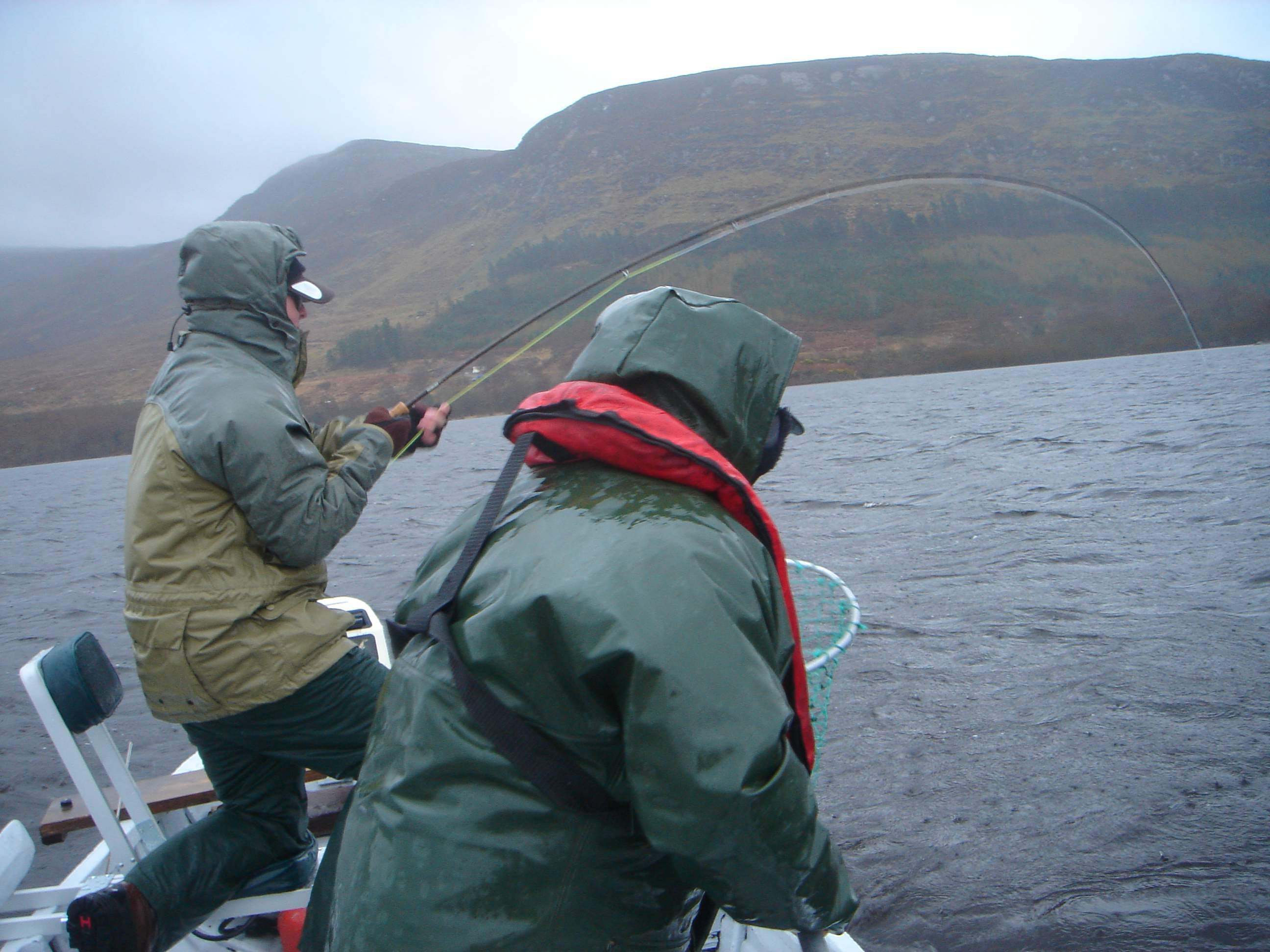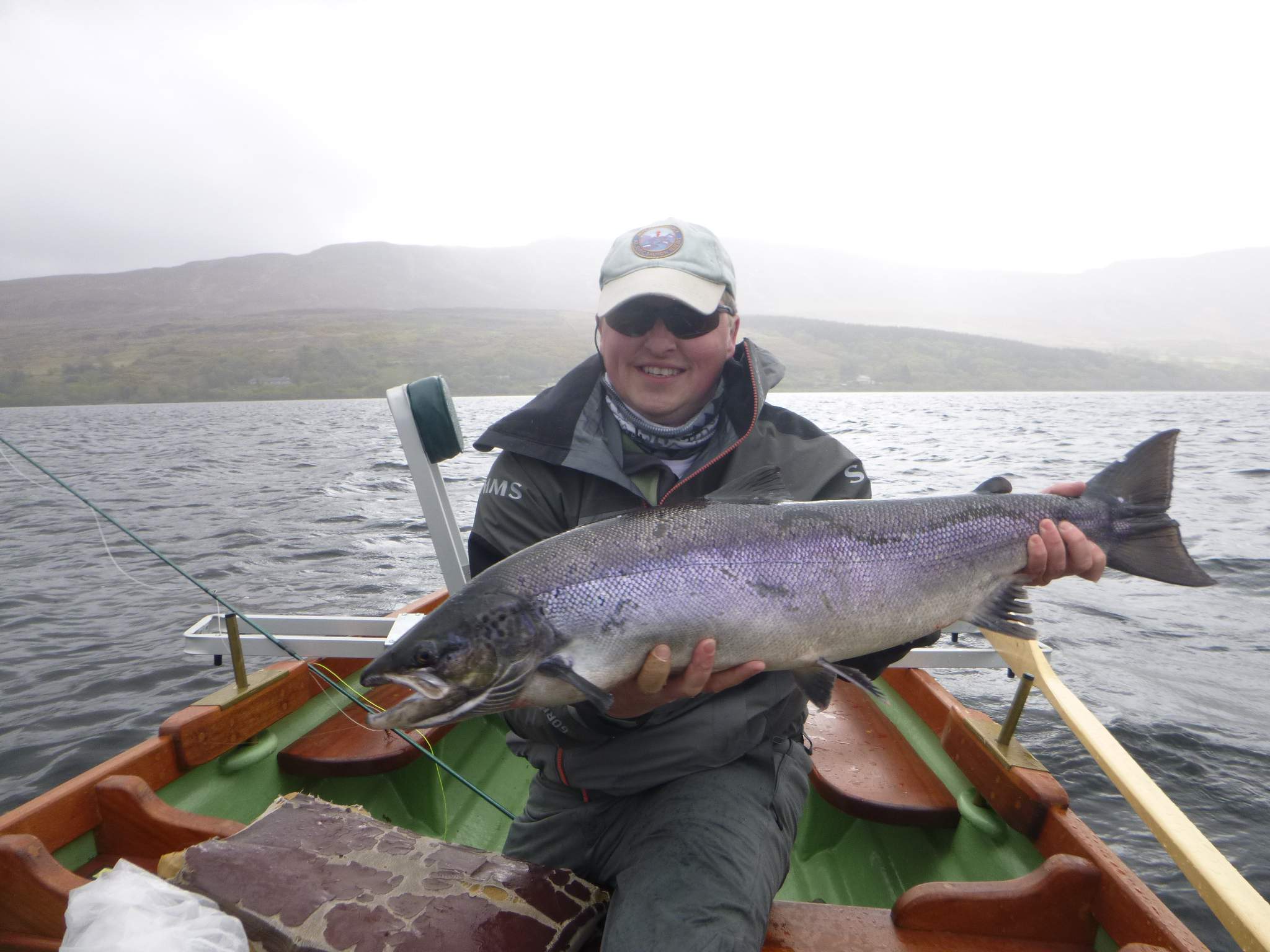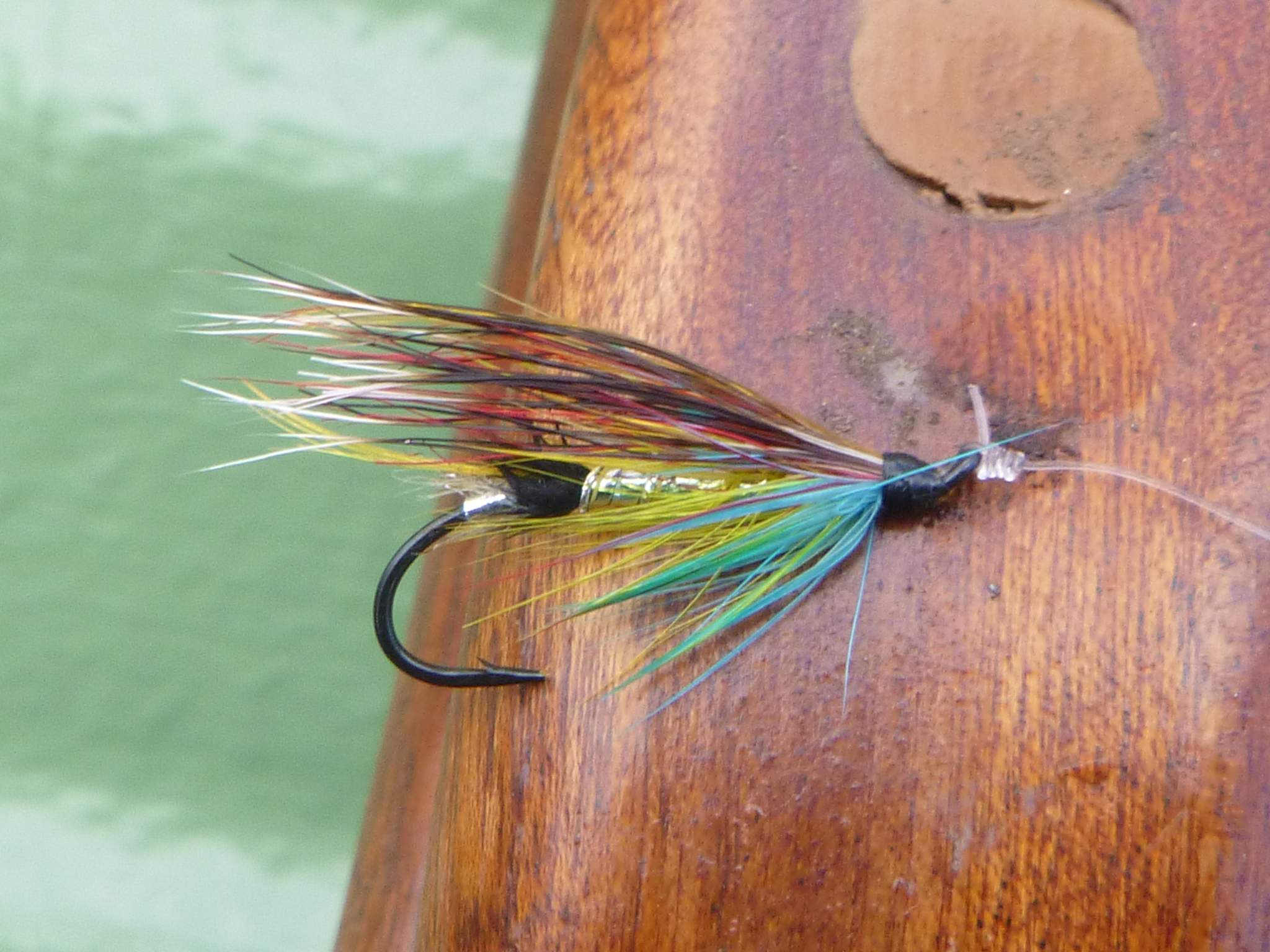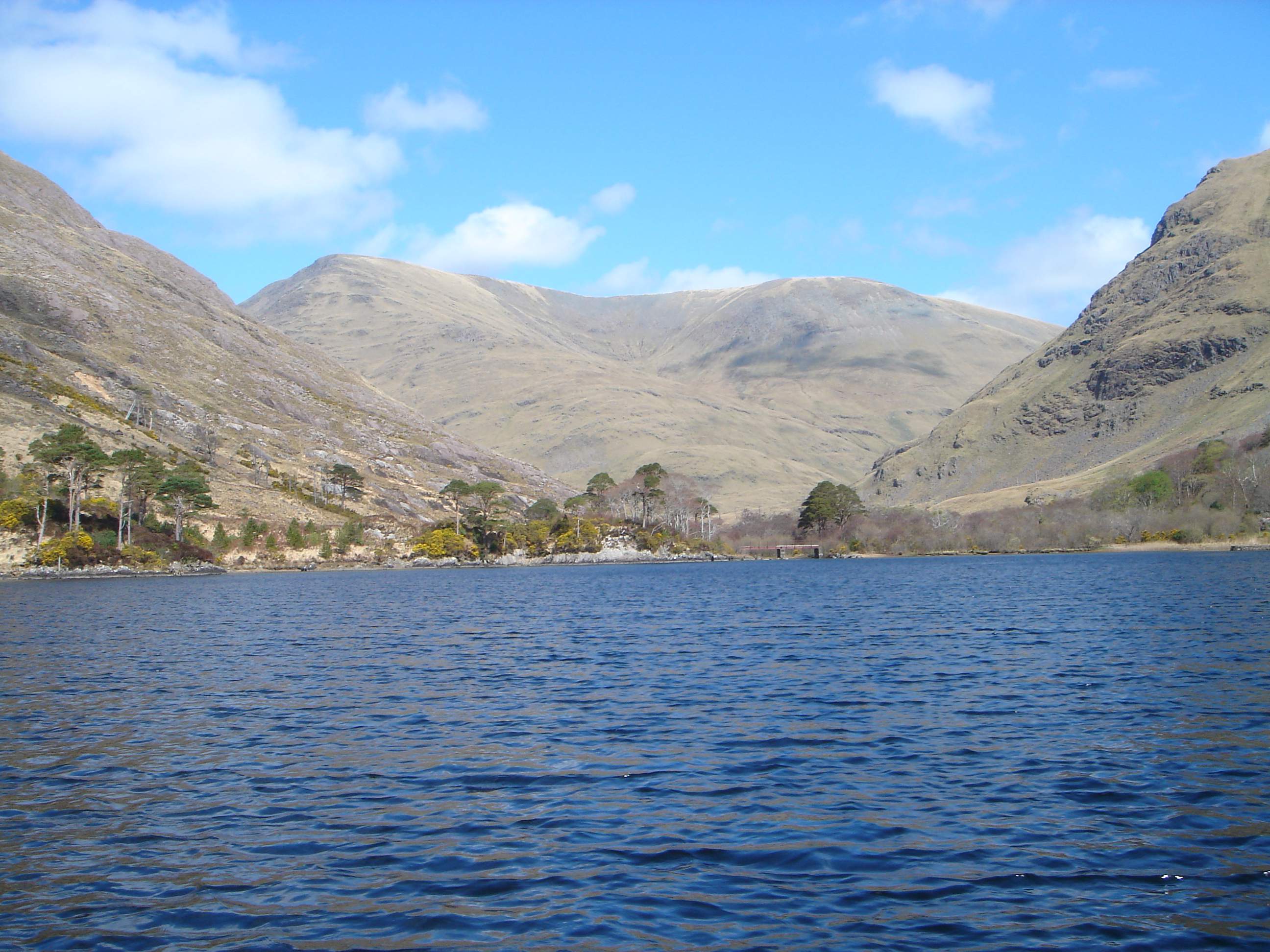As the year turns to Spring many anglers will be dusting down their big rods , checking those heavy sinking lines and tying up large tube flies for the start of the river Salmon season and the quest for that elusive springer , fresh and shining from the sea .
For a smaller band of anglers however the beginning of the Salmon season is the signal that the search is on , not in the rivers but in the wild loughs of the west and an altogether different challenge compared to the river fisher . Make no mistake , lake fishing for Spring Salmon is no easy business and can be hard work , but the reward of seeing a large silver fish roll over your tripping bob fly only feet from the boat must be one of the most exciting moments our sport has to offer .
As you may gather springers behave very differently in a lake than in a river and fortunately for us can be free rising , taking relatively small flies much higher in the water than you might expect and on occasions at such shallow depths that can surprise even the most experienced lough fisher .

A strong fish comes to the net on a rough day on Beltra
Highly specialised tackle is not really required and most anglers will have a single handed 10' #7 or #8 wt. rod somewhere in their armoury which will suffice perfectly well , although the advantage of a longer rod of 11' or more in working the bob fly at a further distance from the boat is very real . The popularity of switch rods in recent years means many anglers will already own a longer rod that can be used single handed , which when partnered with a suitable line will be perfect for lough Salmon .
Standard practice in early spring is to use sink tip or perhaps full intermediate lines and rarely is it necessary to use anything with a greater density than a medium sinker as the most productive areas and therefore where most fishing is done are generally of a depth between 2 - 10 ft .
Although we all love our reels (and who doesn't like a bit of 'bling' ?) , the truth is that for this kind of fishing the reel is possibly the least important item of tackle . Whether it has a disc drag or click check mechanism , is large arbour or standard construction , is of purely personal preference and so long as it is of good quality , runs smoothly and most importantly has a large enough capacity to hold the line and at least 100m of backing , will be adequate for the task .

Make sure your reel is well loaded with backing - This 17lb springer took in 3ft of water and ran off 100m in a few seconds
Just like salmon fishing anywhere every water breeds it's own special and unique fly patterns not to mention individual anglers own preferences , but as a very broad generalisation , flies for stillwater salmon fall into two main categories - slim/heavy dressings designed to sink quickly and fished on the point and bulky/lightweight patterns for use as dropper/bobfly .
Irish shrimps such as Bann Special or Curry's Red make excellent point flies as do modern longtail dressings like Cascade and Park Shrimp , often dressed on heavy weight doubles for extra ballast in sizes 6 -10 depending on conditions .
Dropper patterns are used in a similar size range and are usually tied on lightweight salmon irons or strong trout hooks and while there are some salmon fly patterns , such as the Beltra Badger and Eamon Kennedy's very effective Jaffa and Jonah Lomu dressings which are designed specially for this role many of the most widely used and successful flies are large bushy trout fly patterns . Green Peter , Bibio , a host of bumble patterns and Muddlers are all employed successfully .
Traditional lough style tactics generally work best , casting a short line , with a smooth retrieve slightly faster than the speed of the drifting boat and raising the rod to bring the bob fly tripping back to the boat in the surface film of the water . Most fish take in the first 2-3 pulls or as the top dropper comes to the surface .The old saying that you won't catch a fish if your fly is not in the water is never more true than in this type of fishing .

The lovely Beltra Badger , a deadly dropper pattern and not only on Lough Beltra
Spring Salmon used to be found in many of Ireland's western loughs , from the North of Donegal to Kerry in the South West and while a number still have a small run there are a few which continue to shine and which can on their day produce memorable sport .
Co.Mayo's Lough Beltra is a fine big lough of 21/4 miles long and 1 mile wide . Close to the small town of Newport it occupies a beautiful setting and is surrounded by mountains and rough pasture .
The fishing is divided east and west between Glenisland Co-Op and Newport House respectively , with the best Spring Salmon drifts being in the north west corner from Clarke's point to the mouth of the inflowing Crumpaun River , some distance out from the beach at the northern end and close in all along the eastern shoreline .
The salmon average 8-12 lbs with the real prospect of fish in the upper teens of pounds and are solid , strong and hard fighting . Beltra has never been stocked or tampered with and the fish are as truly wild as their surroundings .
http://www.newporthouse.ie/fishing.html
Carrowmore Lake , regarded by many as one of Ireland's premier spring salmon destinations , lies close to the town of Bangor Erris in North West Mayo .
It is a large and relatively shallow lough , over 4 miles long and at it's widest point almost three miles across and can occasionally become rather coloured after heavy winds due to the silty nature of the bottom which can spoil fishing for a day or two . Given good , more settled conditions the fish can be free rising making for very exciting and productive fishing .
Access to Carrowmore is controlled by Bangor Erris Angling Club who helpfully have produced a map indicating where the best drifts are to be found . Paradise Bay , Bog Bay , by the mouth of the Glencullen River and along the white shore are among some of the most productive areas .
http://bangorerrisangling.com/

Fin Lough Delphi , inflowing river in the distance
Fin Lough is the first lake on the famous Delphi system close to the town of Leenane Co.Galway .
It is a small and mainly shallow lough situated amidst spectacular scenery and although it can produce a fish from almost anywhere several spots are worthy of special attention . The mouth of the inflowing river is a noted hot spot for a fish as is the shoreline in front of Wren's cottage and what angler wouldn't be enticed by the area in the south west corner known locally as salmon city .
Delphi run a salmon ranching programme and fish of hatchery origin are removed upstream but all must pass through Fin Lough meaning that on occasions the lough can hold a very large stock . All wild fish must be released to continue their journey while all hatchery fish , identified by their clipped adipose fins , must be retained .
https://delphilodge.ie/fishery-2/the-fishery/









